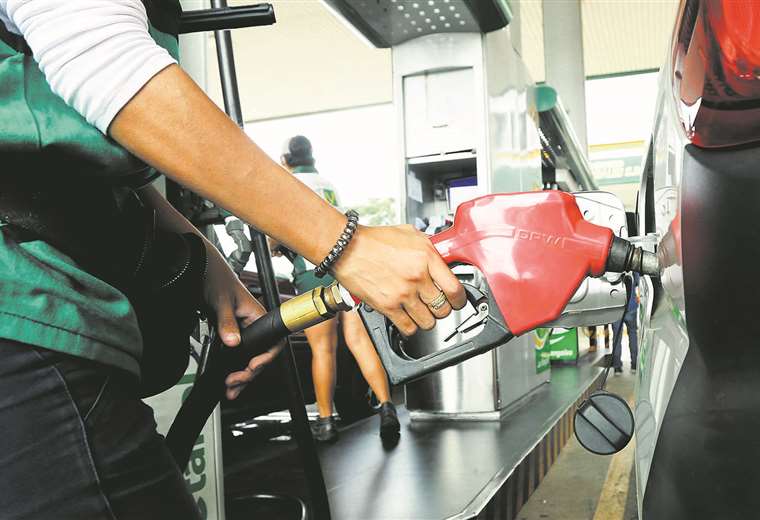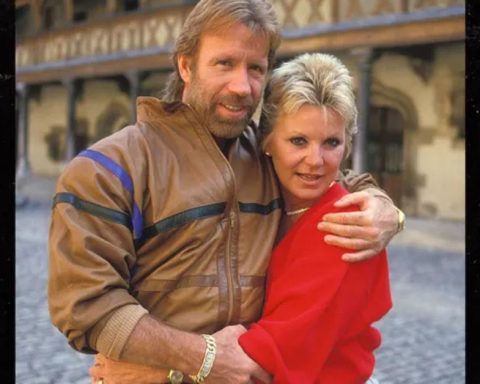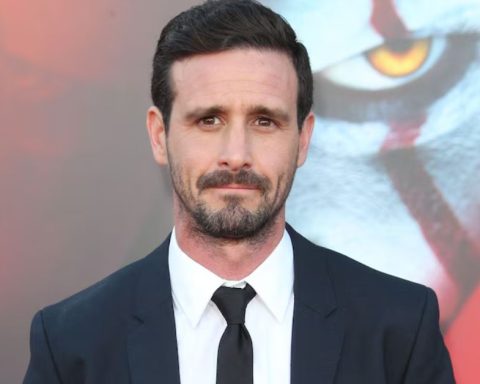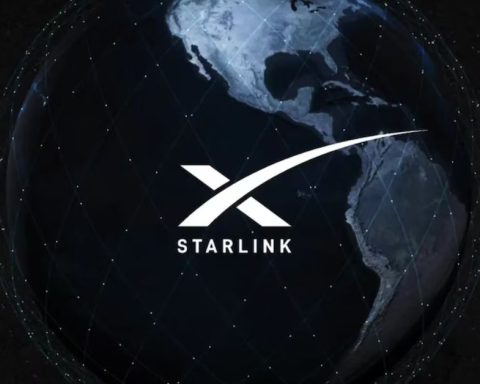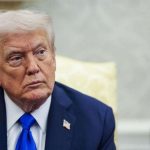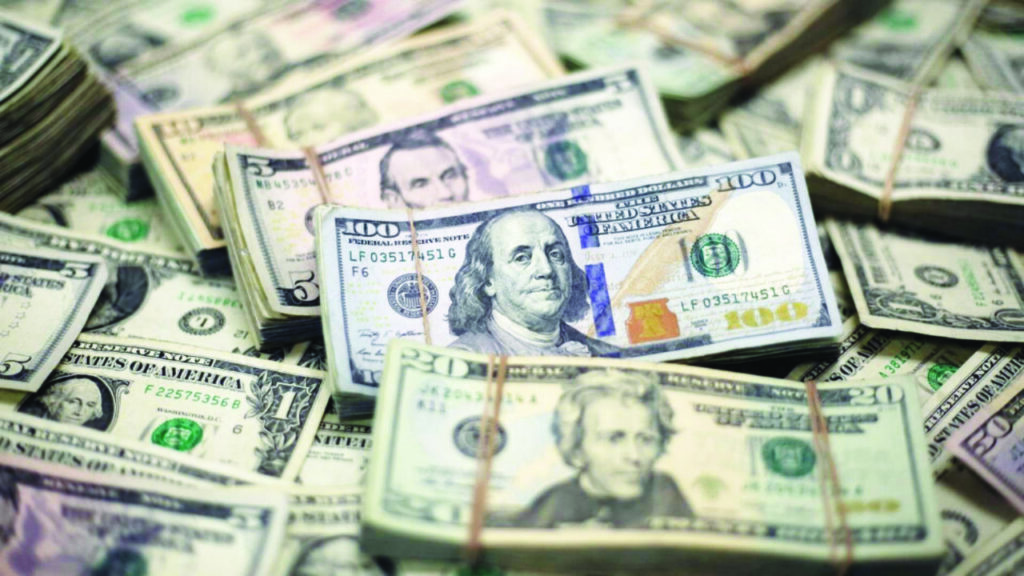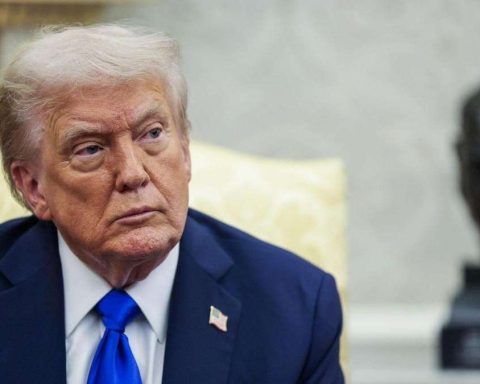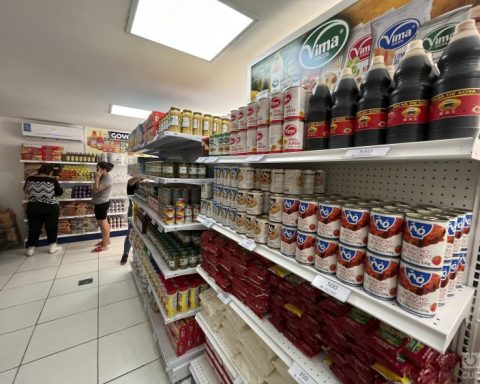August 7, 2022, 4:00 AM
August 7, 2022, 4:00 AM
Fuel imports grew by 143% in the first half of 2022 compared to the same period in 2021, according to figures from the National Institute of Statistics (INE). This scenario suggests greater spending on subsidies, according to experts.
Thus, the external purchase of gasoline and diesel totaled US$1,772 million as of June of this year, compared to US$729 million in the first half of 2021.
With the aim of taking care of the purchasing power of the population and avoiding shocks in the Consumer Price Index (CPI), the thermometer that measures the inflationary index, the General State Budget (PGE), programmed Bs 5,088 million for hydrocarbon subsidies , food and basic services. However, due to the rise in fuel prices, the subsidy for imports alone is Bs 6,000 million.
According to the Ministry of Economy, the PGE 2022 contemplates Bs 4,794 million for the importation of gasoline and diesel, in 2021 the amount allocated was Bs 3,013 million, while, to subsidize food, the value is Bs 168.1 million ( Bs 257.5 million, in 2021) and to cover basic services, Bs 125.6 million was contemplated when in the PGE 2021 it was Bs 124.2 million.
Jorge Dunn, economic analyst, notes that, due to the current political and economic situation, what was programmed by the PGE 2022 on the subject of subsidies was outdated. And he specified that when the PGE was prepared for this management, it contemplated an oil price of $50.47 a barrel and with a price of food lower than current values, so in Dunn’s opinion so far this year only the subsidy for hydrocarbons is already in the order of Bs 6,000 million, and considers that the global amount of the subsidy by the end of the year will be about Bs 7,000 million, a figure that coincides with the estimates of the Minister of Economy, Marcelo Montenegro , who said that the subsidy for gasoline and diesel in the current administration is estimated at US$ 1,000 million.
On the subject, the former Minister of Hydrocarbons, Álvaro Ríos, specified that according to June data, fuel imports are likely to exceed US$3 billion this year, an aspect that will put upward pressure on the subsidy.
Ríos said that the large volumes of imports indicate a drop in the national production of condensates and oil, for which the refineries are producing less and less diesel and gasoline.
He also stressed that the increased purchase of fuel at more expensive prices outlines that imports at the end of the year will range between US$3.2 billion and US$3.5 billion, putting strong pressure on the resources that the State allocates to subsidize fuels. liquid fuels.
Regarding the objective of the hydrocarbon price subsidy, Carlos Arze, a researcher at the Center for Labor and Agrarian Development Studies (Cedla), assured that its validity can be explained by a rather political and electoral interest, based on show that the fundamental objective is to preserve the income and purchasing power of the population.
Arze explained that the Government has an ambiguous and changing conception of the subsidy, since in 2006 it considered that it was a “patch” of the failure of the neoliberal governments of the 90s and that, given the impossibility of developing an energy policy that guaranteed the provision of fuel for economic activities, could only regulate and incorporate this measure into its policy.
In 2010 it tried to lift the subsidies, a failed experience, called a ‘gasolinazo’ by the population, it was justified as necessary because the character and nature of the subsidy had been distorted, in addition to the fact that the country had already advanced towards a transformation of the productive structure and it was not pertinent to maintain this neoliberal measure, Arze remarked.
“In 2012, the government introduced the subsidy as an anti-inflationary measure. Given the failure of the 2010 measure, it resumed and created a new incentive based on the budget law, which would be paid through Fiscal Credit Notes in an additional amount of 30 dollars per barrel, to the production of the oil fields” , specified the researcher.
The impact on the population
Sósimo Paniagua, secretary general of the Santa Cruz Departmental Workers Central (COD), stressed that the social and economic policy of subsidizing hydrocarbons, some food and basic services (use of electricity), has the objective of protecting the population and maintain their purchasing power.
Paniagua insisted that the Government must think of the majority, that it is responsible for the well-being of citizens, beyond sectoral demands and that in light of recent events, such as the economic problems in Argentina, in his opinion the subsidy was correct.
“The problems of inflation, the constant increase in prices that affects the pockets of workers in Argentina, indicate that the presence of the State is necessary to control the price of strategic products and thus avoid these imbalances. So we highlight this policy of subsidies and the fair price for some foods,” Paniagua pointed out.
In the opinion of Gary Rodríguez, general manager of the Bolivian Institute of Foreign Trade, he observes that, from the economic point of view, granting a subsidy -buy high and sell low, such as the subsidy for fuel or certain foods, by the State- implies a transfer in favor of third parties, at the expense of someone bearing the cost of such policy. With what intention? Clearly, prevent a rise in prices that reduces purchasing power and affects low-income people. Of course, buying fuel or food at low prices benefits consumers, especially those with fixed and low incomes, Rodríguez said.
Jhony Mercado, former president of the Bolivian Association of Economists, considers that the subsidy policy achieves its objective of controlling prices and avoiding the devaluation of the national currency, which allows the population to have certainty to be able to plan their expenses, investments and savings. .
However, Mercado notes that this system is only viable if the State has significant income that allows it to strengthen the Net International Reserves (NIR), if it does not run the risk of resorting to external credit and indebting the country.
For the economist Germán Molina, in the development of the economy, the Government acts as an influential economic agent through: taxes, public spending, public debt and regulation. The first two have a great interrelation since income is required to carry out expenses by the Government, and the source of financing is taxes.
Within the components of fiscal spending, a subsidy is assigned that is defined as any government assistance or incentive, in cash or in kind, towards private sectors -producers or consumers-, for which the Executive does not receive equivalent compensation in return, Molina said. .
The economist explained that in the country there is a budget allocated for the following products that have a subsidy: diesel, gasoline, natural gas, LPG, electricity, rice, flour and corn. In food, they range from collection to sale.
This public subsidy policy ensures that derivatives such as chicken, pork, milk and eggs maintain stable prices.
“The subsidy means that the population can access products with regulated and fixed prices, it also allows the inflation rate to register low levels and therefore the increase in the cost of living is softened,” reflected the economic analyst.
